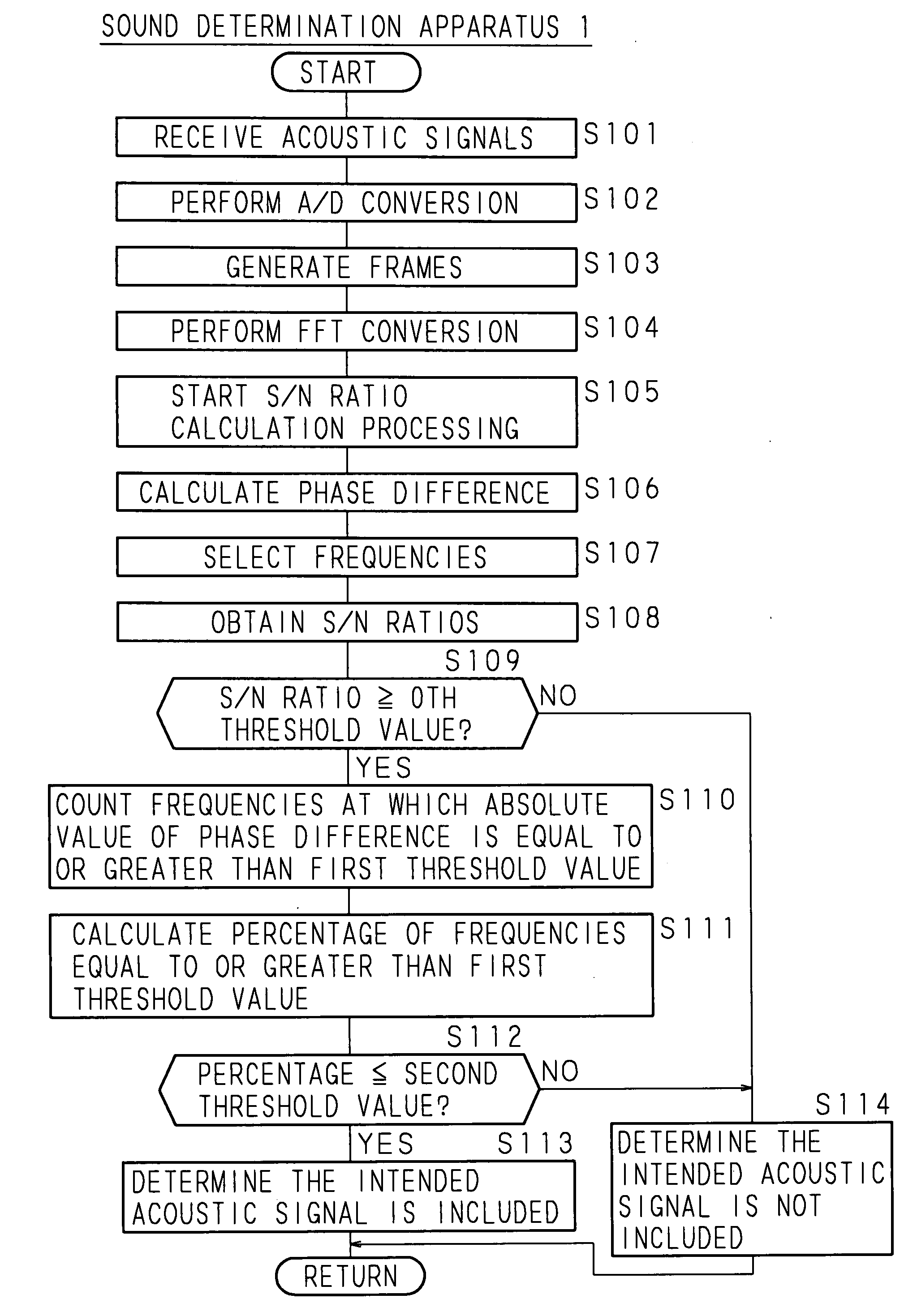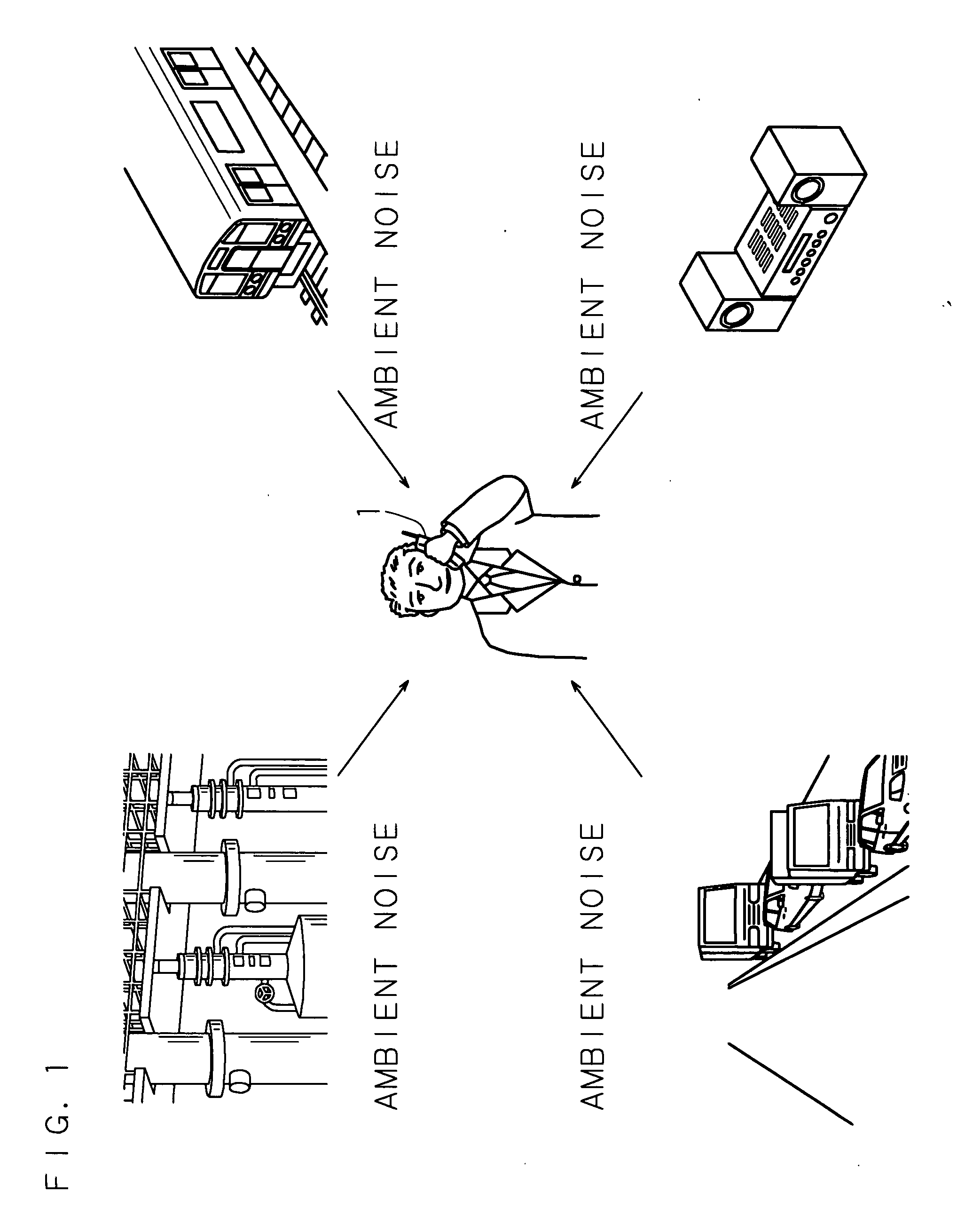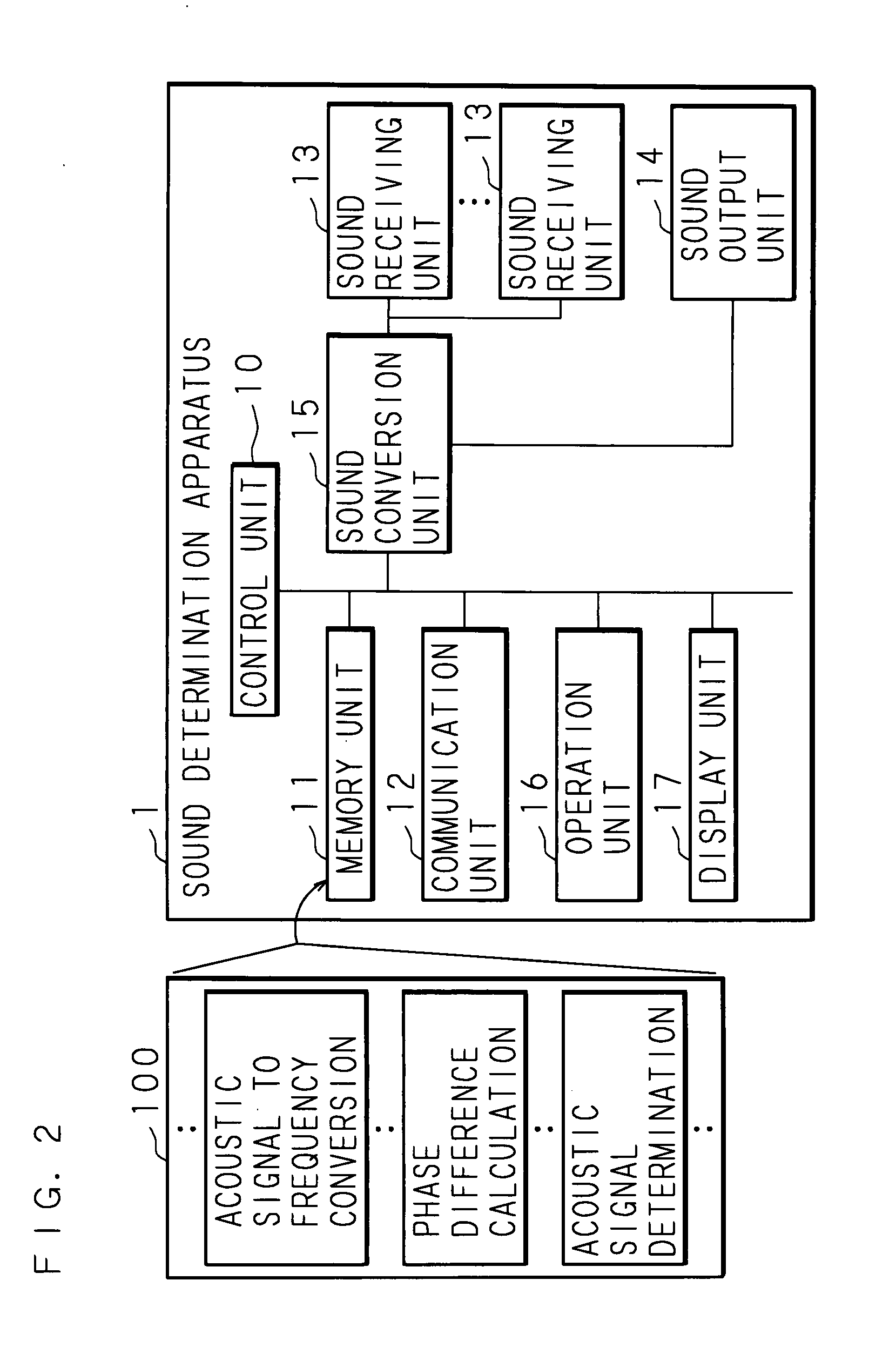Sound determination method and sound determination apparatus
- Summary
- Abstract
- Description
- Claims
- Application Information
AI Technical Summary
Benefits of technology
Problems solved by technology
Method used
Image
Examples
first embodiment
[0045]FIG. 1 is a drawing showing an example of the sound determination method of the first embodiment of the invention. In FIG. 1, the reference number 1 is a sound determination apparatus which is applied to a mobile telephone, and the sound determination apparatus 1 is carried by the user and receives the voice spoken by the user as an acoustic signal. Moreover, in addition to the voice of the user, the sound determination apparatus 1 receives various ambient noises such as voices of other people, machine noise, music and the like. Therefore, the sound determination apparatus 1 performs processing for suppressing noise by identifying the target acoustic signal from among the various acoustic signals that are received from a plurality of sound sources, then emphasizing the identified acoustic signal, and suppressing the other acoustic signals. The target acoustic signal of the sound determination apparatus 1 is the acoustic signal coming from the sound source that is nearest to th...
second embodiment
[0069]The second embodiment is a form that limits the intended acoustic signal coming from the sound source in the first embodiment to a human voice. The sound determination method, as well as the construction and function of the sound determination apparatus of the second embodiment are the same as those of the first embodiment, so an explanation of them can be found by referencing the first embodiment, and a detailed explanation of them is omitted here. In the explanation below, the same reference numbers are given to components that are the same as those of the first embodiment.
[0070]In the second embodiment, further selection conditions according to the voice characteristics are added to selection by the selection unit 114 in the sound determination process of the first embodiment. FIGS. 9A, 9B are graphs showing an example of the voice characteristics used in the sound determination method of the second embodiment. FIGS. 9A, 9B show the characteristics of a female voice, where ...
third embodiment
[0074]The third embodiment is a form in which the relative position of the sound receiving units in the first embodiment can be changed. The sound determination method, as well as the construction and function of the sound determination apparatus of the third embodiment are the same as those of the first embodiment, so an explanation of them can be found by referencing the first embodiment, and a detailed explanation of them is omitted here. However, the relative position of the respective sound receiving units can be changed such as in the case of external microphones that are connected to the sound determination apparatus by a wired connection, for example. In the explanation below, the same reference numbers are given to components that are the same as those of the first embodiment.
[0075]In the case of the acoustic velocity V (m / s), the distance (width) between sound receiving units 13, 13 W (m), and the sampling frequency F (Hz), it is preferred that the relationship between the...
PUM
 Login to View More
Login to View More Abstract
Description
Claims
Application Information
 Login to View More
Login to View More - R&D
- Intellectual Property
- Life Sciences
- Materials
- Tech Scout
- Unparalleled Data Quality
- Higher Quality Content
- 60% Fewer Hallucinations
Browse by: Latest US Patents, China's latest patents, Technical Efficacy Thesaurus, Application Domain, Technology Topic, Popular Technical Reports.
© 2025 PatSnap. All rights reserved.Legal|Privacy policy|Modern Slavery Act Transparency Statement|Sitemap|About US| Contact US: help@patsnap.com



